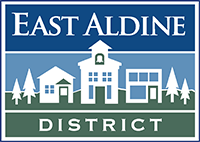Research shows that children who participate in high-quality pre-K programs are more likely to read on grade level by 3rd grade, and that students who do have a greater chance of graduating from college and being career-ready.
But pre-K enrollment has fallen short across the nation for a variety of reasons, and now it has been stunted further by the pandemic.
Good Reason Houston, an education non-profit through which business and community leaders partner with school districts to improve education, recently spoke with local educators about how districts are addressing the enrollment decline.

Ray Mondrogan, executive director of Early Childhood Learning for the Aldine Independent School
Ellie Johnson, head of Early Learning for Good Reason Houston, spoke with Ray Mondrogan, executive director of Early Childhood Learning for the Aldine Independent School District, among others. He is committed to supporting the quality of early childhood and ensuring that students are in high-quality classrooms for their learning. Aldine has 12 primary schools dedicated to the pre-K and kindergarten students. The district offers options for students at its primary campuses, including Montessori, International Baccalaureate programs and Head Start.
Here are excerpts from Johnson’s questions and Mondragon’s answers, edited for clarity.
Q: Why is pre-K important?
A: It sets the foundation for our earliest learners to be strong in literacy and math as well as social/emotional development. You pit all of those together and you are going to come out with a student that is going to be strong and be successful in their educational career.
In addition to supporting the students, our district is also committed to supporting parents. Parents are the child’s first teachers and we support them being strong advocates for their children as they go through their educational experience. So, we wrap around the students and the families here in Aldine.
Q: This school year, Texas saw an overall 22% decline in pre-K enrollment. This makes this a statewide problem. What were some of the challenges that may have led to this decline?
A: This is a great question and one that keeps me up at night. We had so many students that did not come to school this year, how will we get them where they need to be when they return next year? In our looking across the district and talking to parents, it is quite clear parents were scared to send their little ones to school. They were scared because of health reasons. They were scared at their homes — some of them live in multi-generational homes — that the fear of the virus coming home from school because of their little ones bringing it to other members that may live at home had another impact to just keep their child at home.
What we did here at Aldine is really pivoted so quickly to provide resources to families, especially all of our primary students, where each child was given a (wireless) device. We are proud to say that every child in Aldine, no matter what grade level they were in, had a device and we were able to in some way provide an educational experience even if it was remotely. We continued to reach out to families to let them know the opportunities at the end of each nine weeks to go ahead and return to school, face to face instruction. We are seeing that more and more of our schools and our students coming back face to face.
Q: We recognize that pre-K enrollment is a community wide problem. What are some of the specific ways that organizations, business, community leaders can support pre-K enrollment efforts this year?
A: The first part of your question where you say community wide problem, I want to switch that to community-wide opportunity. What is our opportunity going to be to increase enrollment across our pre-K schools across Houston?
One thing that I have been thinking about is we cannot do things the way we have done it in the past. This is a new time to do things differently; to look at new ways, to reach out to families, to enroll families, to do our marketing. Let us be really innovative on how we are going to do this because we are coming out of the pandemic that we should not be doing business as usual. Like we did before, schools should look different. How we do this should look different and let us embrace that and look at this opportunity.
How do we go into where families are to get students to enroll? To bring families the information about pre-K in Aldine? And not just rely on, “Oh well we have a banner, or we put it on our website, or we sent out a flyer.” No, we have to do some new and innovative things to reach out to these families. We need to bring them in and invite them in back into our school community for them to see that our schools are safe. That we are excited to welcome them back and their child back for whatever grade level it is.
So, thinking about outside the box and partnering with our community members with our businesses and with community leaders, I am excited about the opportunity that we can look at how we reach out to families and our partnerships to do so to increase enrollment and get it back to where it was in 2019.
Q: What does enrollment look like for your district? What is the first step families should take if they are interested in enrolling their child in pre-K?
A: In Aldine, enrollment began March 8 and is currently done on the website so parents can access the website and put in all of their information. We began at the beginning of April with our registrars at the schools contacting parents and inviting them to come to the schools and finish the enrollment process.
We provide all of our materials in both English and Spanish and some other languages, if there is a need for it.
For more information about enrollment, visit the district website at www.aldineisd.org.
– by Jessika Leal







